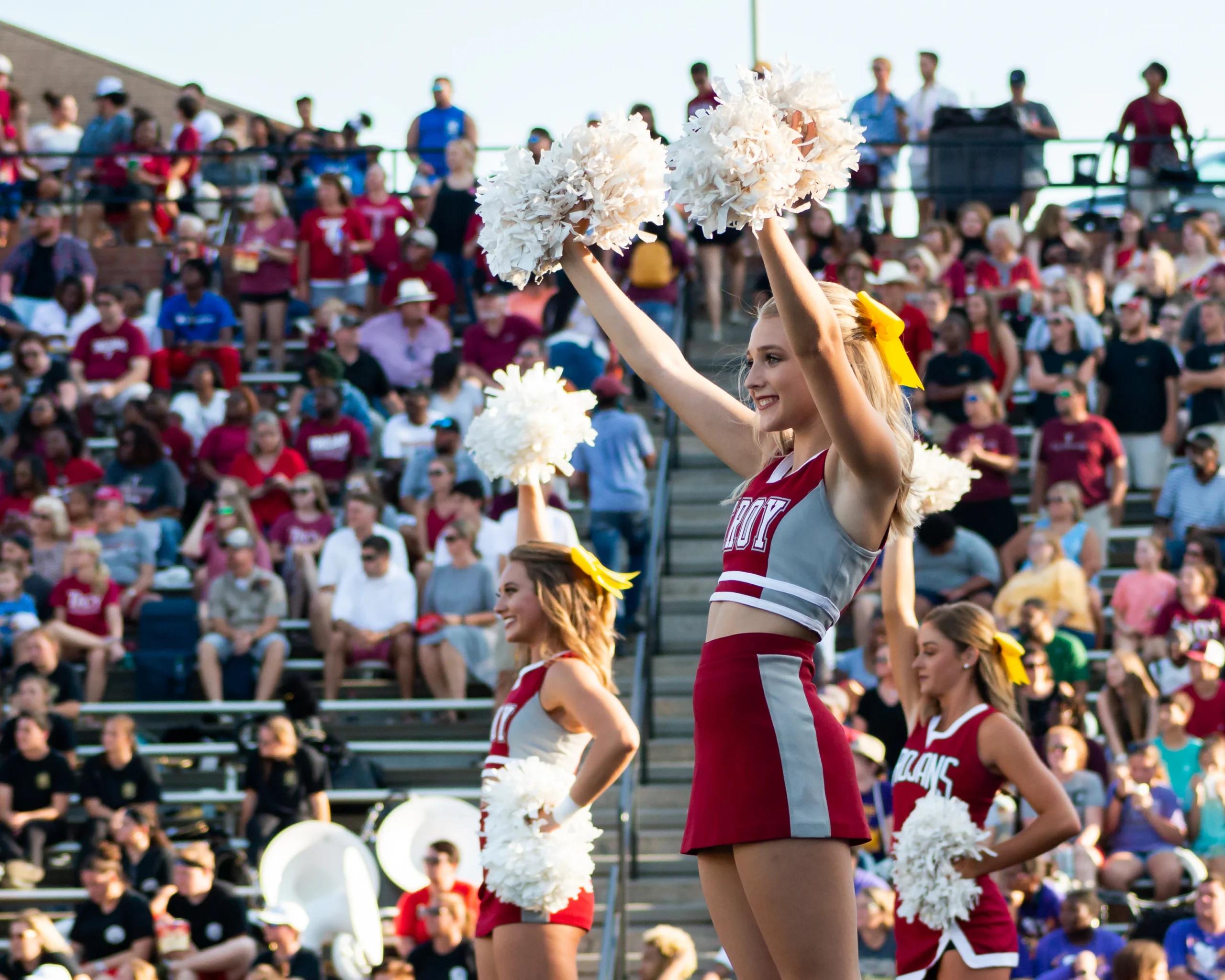Varsity Brands, the largest manufacturer of cheerleading and dance uniforms, just scored a major copyright victory at the United States Supreme Court, which ruled that the designs on cheerleading uniforms are copyrightable.
Varsity Brands has 200 U.S. copyright registrations for two-dimensional designs that are generally “combinations, positioning, and arrangements of elements” including “chevrons…lines, curves, stripes, angles, diagonal, inverted [chevrons], coloring, and shapes.” Varsity Brands sued another manufacturer, Star Athletica, for infringing five designs. Star Athletica argued that the designs couldn’t be copyrighted because they served a “utilitarian function.” That is, the purpose of those designs was to identify the uniforms as uniforms and, therefore, the designs could not be separated from their utilitarian function.
Under Section 101 of the Copyright Act, “pictorial, graphic, and sculptural works” that also have utilitarian aspects can only be copyrighted “if, and only to the extent that, such design incorporates pictorial, graphic, or sculptural features that can be identified separately from, and are capable of existing independently of, the utilitarian aspects of the article.”
The District Court agreed with Star Athletica and granted summary judgment in its favor. The Sixth Circuit reversed the decision, saying that the graphic designs were separately identifiable from the utilitarian function because the designs and a blank cheerleading uniform could appear side by side, “one as a graphic design and one as a cheerleading uniform.” The Sixth Circuit further determined that the designs on cheerleading uniforms were capable of being incorporated onto the surface of several types of garments or hung on the wall as art.
The question for the Supreme Court was what was the right test for implementing the “separate-identification” and “independent-existence” requirements under Section 101. In the majority opinion, which was written by Justice Clarence Thomas, the Court held the proper test was that a feature incorporated into the design of a useful article is eligible for copyright protection if:
- it can be perceived as a two-or-three-dimensional work of art separate from the useful article; and
- it would qualify as a protectable pictorial, graphic, or sculptural work—either on its own or fixed in some other tangible medium of expression—if it were imagined separately from the useful article into which it is incorporated.
When the Court applied the test to cheerleading uniforms, it found that the designs were identifiable as having pictorial, graphic or sculptural qualities, and if the designs were separated from the uniforms and applied to another medium they would qualify as two-dimensional works of art.
“Indeed, [Varsity Brands] applied the designs in this case to other media of expression—different types of clothing—without replicating the uniform,” Thomas wrote.
The Court rejected several of Star Athletica’s arguments. The company first argued that a feature of a useful article could only exist independently if it could stand alone as a copyrightable work and if the useful article would still be useful without it. The Court said the Copyright Act indicates that “separability” is conceptual and not physical. Star Athletica also argued that the test should include a determination of whether the design elements were identifiable as reflecting the designer’s artistic judgment “exercised independently of functional influence” and whether there was a substantial likelihood that the pictorial, graphic, or sculptural feature would be marketable without the utilitarian function. The Court rejected this argument because it thought Star Athletica was attempting to expand what is written in Section 101, which the Court was unwilling to do. Star Athletica’s final argument was that allowing the designs to qualify as “a work of authorship” went against Congress’s intent to exclude industrial designs from copyright eligibility. The Court disagreed and said that its test would not result in the shape, cut, and physical dimensions of cheerleading uniforms being eligible for copyright protection.

Where creative minds come together
Justices Stephen Breyer and Anthony Kennedy, the dissenters, thought cheerleading uniform designs were not separable from the uniforms because if they were imaginatively removed and placed in some other medium, they would simply be pictures of cheerleading uniforms; thus, they would just be pictures of a useful article. The majority explained that the situation described would be eligible for copyright protection, however. Thomas wrote:
A fresco painted on a wall, ceiling panel, or dome would not lose copyright protection, for example, simply because it was designed to track the dimensions of the surface on which it was painted. Or consider, for example, a design etched or painted on the surface of a guitar. If that entire design is imaginatively removed from the guitar’s surface and placed on an album cover, it would still resemble the shape of a guitar. But the image on the cover does not “replicate” the guitar as a useful article. Rather, the design is a two-dimensional work of art that corresponds to the shape of the useful article to which it was applied. The statute protects that work of art whether it is first drawn on the album cover and then applied to the guitar’s surface, or vice versa.
Stay tuned to The Fried Firm blog for more news on important copyright cases.



